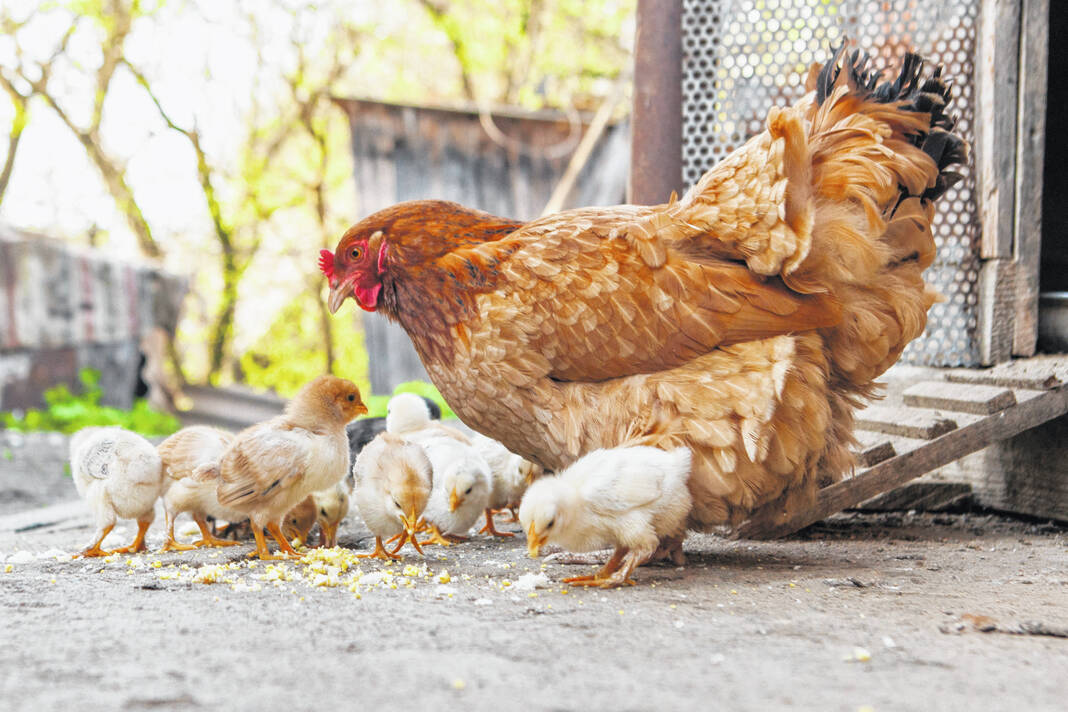
Those with backyard flocks, small poultry businesses, 4-H/FFA projects, and commercial barns should be implementing biosecurity protocol to combat avian influenza.
Metro Media image
By Taylor Dill, OSU Extension
Guest Contributor
DARKE COUNTY — A strain of highly pathogenic avian influenza (HPAI) has been rapidly spreading in the United States since February of this year. Bird flu, or avian influenza, is a disease caused by an influenza type A virus that can infect poultry. According to the Center for Disease Control (CDC), this virus is not a threat to human health. Eggs, chicken, and turkey are safe to eat. Most avian influenza strains are low pathogenic but there are highly pathogenic strains that cause death in poultry and can be devastating to the poultry industry. In 2015, the United States experienced a strain of HPAI that eradicated 50.3 million birds across the country. It was the most expensive animal health incident in U.S. history. Thankfully, Ohio was spared from this crisis in 2015.
The current strain of HPAI has been identified in commercial poultry flocks in 14 states and has left 26 million commercial poultry birds dead across the country as of April 13, 2014. HPAI has been found in wild birds in 32 states, including Ohio. HPAI was recently identified in Franklin County, Ohio, in a backyard flock which has since been depopulated. The disease is spread by migratory birds. Wild birds carry the virus but do not show signs of illness. However, these waterfowl can be detrimental to our domesticated flocks. In Ohio, poultry is a $4 billion industry. Darke and Mercer counties are the top producers of poultry in the state. An outbreak in this area could be devastating to the local economy and to poultry farmers and small business. Therefore, everyone with backyard flocks, small poultry businesses, 4-H/FFA projects, and commercial barns should be implementing biosecurity protocol.
What can be done to protect poultry flocks in Darke County? The best way is to be able to identify the disease and improve biosecurity practices. One of the earliest signs of the disease is increased death in poultry flocks, with up to a 100 percent mortality rate in many cases. The birds will show signs of illness including twisted necks, blue and swollen faces, and swollen feet. A decrease in water consumption and a lack of noise in large houses can also be indicators of sickness. The incubation period for this disease is 14 days. If you think your birds have the flu or they are dying at an alarming rate, contact any of the following: Ohio Department of Agriculture 614-728-6220 or 888-456-3405 for after hours; US Department of Agriculture 888-536-7593; or Ohio Poultry Association 614-882-6111. One of these agencies will come out and test the birds to identify the disease.
To improve biosecurity, remove standing water, do not use pond water as drinking water, and reduce wildlife feed sources. Standing water, even shallow water, can attract wild birds. Be sure to keep domestic birds away from these areas, and do not walk or move equipment near areas visited by waterfowl. Provide clean water for your birds and prevent wild bird contact with your poultry’s drinking water. Halt the feeding of wildlife and keep poultry feed in a secure area that cannot be accessed by wildlife. Adding wildlife deterrents, such as decoys, and moving them frequently can improve their effectiveness at discouraging wild birds. Fencing around ponds is also another biosecurity tactic.
Measures to take when interacting with poultry:
· prevent any contact with wild birds or other animals, whether wild or domestic.
· Keeping domestic birds sheltered in an animal proof/bird proof house.
· Limit the number people who have access to your flock.
· Use disposable gloves and shoe covers when taking care of your birds or their environment.
· Wash your hands before and after contact with your birds or their environment.
· Use dedicated clothes to work with your birds or wear disposable coveralls.
· Avoid surface water as a source of drinking water.
· Acquire feed from reliable sources and store it in a clean, dry, and cool place away from wild birds and other wild animals, particularly rodents
Taking these steps to keep poultry safe is imperative for the safeguarding of our farmers livelihoods and that of our local economy.




